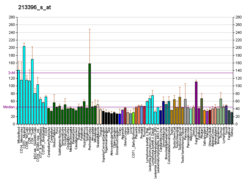| AKAP10 | |||||||||||||||||||||||||||||||||||||||||||||||||||
|---|---|---|---|---|---|---|---|---|---|---|---|---|---|---|---|---|---|---|---|---|---|---|---|---|---|---|---|---|---|---|---|---|---|---|---|---|---|---|---|---|---|---|---|---|---|---|---|---|---|---|---|
| |||||||||||||||||||||||||||||||||||||||||||||||||||
| Identifiers | |||||||||||||||||||||||||||||||||||||||||||||||||||
| Aliases | AKAP10 , AKAP-10, D-AKAP-2, D-AKAP2, PRKA10, A-kinase anchoring protein 10 | ||||||||||||||||||||||||||||||||||||||||||||||||||
| External IDs | OMIM: 604694; MGI: 1890218; HomoloGene: 32452; GeneCards: AKAP10; OMA:AKAP10 - orthologs | ||||||||||||||||||||||||||||||||||||||||||||||||||
| |||||||||||||||||||||||||||||||||||||||||||||||||||
| |||||||||||||||||||||||||||||||||||||||||||||||||||
| |||||||||||||||||||||||||||||||||||||||||||||||||||
| |||||||||||||||||||||||||||||||||||||||||||||||||||
| Wikidata | |||||||||||||||||||||||||||||||||||||||||||||||||||
| |||||||||||||||||||||||||||||||||||||||||||||||||||
A kinase anchor protein 10, mitochondrial is an enzyme that in humans is encoded by the AKAP10 gene. [4] [5]



